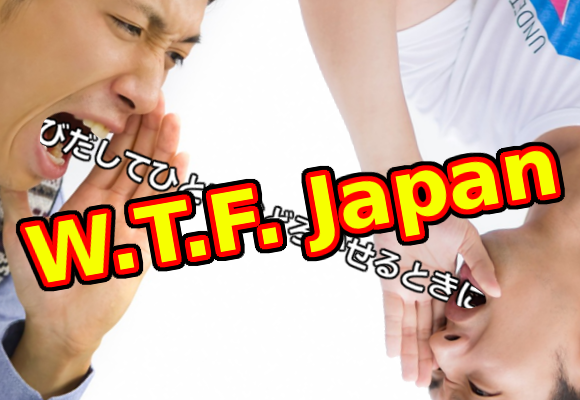
Some of these are so long they may require a friend to help say them.
What exactly is a kanji reading anyway? If you’ve studied Japanese then you know that most kanji have at least two readings: the Chinese reading and the Japanese reading. Take the kanji for “to eat” for instance (食). Its Chinese reading is shoku (which comes from shi in Chinese), and its Japanese reading is taberu (which is how you say “to eat” in Japanese).
But would something like, say, kuchi ni ireru (“to put in your mouth”) be a reading for that kanji? Probably not; that’s just a definition of the kanji, not a reading for it. That’d be like reading the abbreviation “etc.” as “there are other similar things but I’d rather not list them” instead of just “et cetera.”
The reason I’m going into all of this linguistic babble is because separating readings of kanji from definitions of kanji can sometimes be kind of hard. In fact, considering the tens of thousands of kanji in existence, it’s too hard a job for me, and I’ve decided to defer the responsibility to one of the most trusted sources for all things kanji: the Morohashi Daikanwa Jiten, a twelve-plus volume behemoth of a dictionary that contains over 50,000 kanji that we’ve used before on the W.T.F. series.
So with all that out of the way, today we’re counting down the top five kanji with the longest readings. If the Morohashi dictionary says it’s a reading, then we’re going to take their word for it, because they have a heck of a lot more experience working with weird and obscure kanji than we ever will.
So let’s get to it! Starting off with…
Honorable Mention: The urban myths
The way that the Morohashi dictionary “confirms” a reading for a kanji is via the index volume (yes, the index is an entire volume… sometimes more, depending on the edition). If the kanji’s reading is in the “Japanese reading” index, then I say it’s fair game to label it a “reading.”
▼ My library’s 15-volume Morohashi. The third and second volumes from the
right are indexes, and the last one is a supplementary volume for MOAR KANJI!
▼ The beginning of the “Japanese reading” index.
We’ve already got an eight-syllable-long kanji just on the first page!
However, when you search online for “kanji with the longest reading,” there’s a lot of people with other opinions for what counts as a “reading” out there. Some of them treat “definitions” as “readings” and it all gets mixed up a bit.
But we would be remiss not to at least mention some of the kanji with absurdly long readings that come up in these online conversations, despite them not technically being “readings” by most accounts.
▼ One such mythological kanji is this 17-syllable one: tora ga hito wo
kamou to suru unarigoe (“the growl of a tiger about to bite a person”).
▼ But unfortunately that reading isn’t in the “reading index.” The index’s reading
for this kanji is tora no unarigoe (“growl of a tiger”), only eight syllables.
▼ The mythological reading does show up in the kanji’s definition proper though,
so we classify it as a “definition” instead of a “reading.”
▼ Another kanji discussed in whispers, the 15-syllable: kyuu ni tobidashite hito wo
odorokaseru koe (“the voice of jumping out suddenly and surprising someone”).
▼ Again, that’s a definition and not a “reading,” but I love how this kanji’s two halves
(“gate” on the left, “person” hiding on the right) come together for its meaning.
And one last thing before we go into jungle-kanji territory, it should go without saying that all of these are extremely rare kanji, and probably no Japanese person you show them to would be able to read them, unless they were some sort of historical kanji otaku.
#5. The ministry of silly walks
"Monty Python"
— erick ღ (@fore_sight_) February 15, 2017
John Cleese
The Ministry of Silly Walks pic.twitter.com/XEdIg4qS8X
All right, so we’re out of the land of kanji tall-tales and back into the super-serious world of the Morohashi readings index.
Although there is one problem: there was a four-way tie between the next kanji on the list, as all of them have 12 syllables. So to divvy them up, I had to do apply a bit of kanji-science.
Let’s take a look at that word for “to eat” again: 食べる. It’s pronounced taberu, but the second and third characters are just phonetic hiragana. The kanji itself at the very beginning is only pronounced ta. So technically this kanji would not be a 3-syllable kanji (taberu), it would only be a 1-styllable kanji (ta),
I applied that same reasoning to the four-way tie. If these kanji were to actually be written out, based on conventions from other kanji, some of them would technically be fewer syllables. So let’s take a look at this first one, which is listed as 12 syllables but if actually written out would probably be only 8 syllables.
▼ This guy’s reading is arukikata ga tadashikunai (“the way of walking is
not correct”). Seems like an accurate representation of that meaning to me.
Going on convention, that tadashikunai part of the reading is usually written like this: 正しくない. The last four characters are just phonetic hiragana, so if this kanji were ever actually written (not that that would probably ever happen, but if it did!), then we’d have to imagine the same thing would happen here, marking it down by four syllables.
So while Morohashi says that this kanji’s reading is 12 syllables long, and we will accept that without question, we will mark it down as the “shortest” of the 12-syllable kanji.
▼ The kanji’s entry in the Japanese reading index.
The kanji’s left half means “roof” and right half means “heron…”
▼ …yup, can’t really imagine a sillier walk than a heron on a roof.
Good job, kanji-creators!
Grey Heron on my neighbours roof. @NatureUK pic.twitter.com/Y8RAsCYRCj
— Paul's Wildlife (@paulswildlife) February 12, 2017
#4. Rocks and fire
While the last kanji on our list got docked by four syllables, these next two only get a small one-syllable loss. They’re still 12-syllables each, but we’ll mark them as just beneath the “pure” 12-syllable ones.
▼ Say hello to ishi wo funde mizu wo wataru
(“step on stones and cross over water”).
The wataru part of that reading is usually written like this: 渡る. The last character there is just phonetic hiragana, so if one were to for some reason have an inkling to actually write this kanji, we’d imagine the same would happen here, technically docking the kanji’s reading by one syllable.
▼ Again, I love this kanji’s composition: “rock” on the left, “water” on the right.
If you’re ever writing about stepping stones in Japanese, please use this!
▼ Next us up is shiba wo taite ten wo matsuru
(“burn firewood and worship heaven/the sky”).
▼ Same reasoning here, the final ru in matsuru would probably be hiragana.
Don’t really get why the top part is “this” and bottom is “indicate” though.
#3. Eternal illness
And now we finally get to the “pure” 12-syllable kanji, the one where – even if you were a crazy person and actually wrote it out – the entire reading would probably be contained in the single kanji.
▼ Ironically enough the “pure” one is this sickly fellow: hisashiku naoranai
yamai (“illness that hasn’t gotten better for a long time”).
Yamai (“illness”), the last part of that kanji’s long reading, is typically just written by itself (病) with no hiragana after it. So we’d have to imagine the same reasoning would be applied here as well, making this one super-dense kanji.
▼ Yet again, these kanji with long readings have some really elegant components
to them: the outer part here means “sickness” and the inner means “hard.”
#2. A satisfyingly disgusting sound
The final two items on our list are also a tie at 13 syllables each. And since both of them would probably have their full readings contained within the single kanji if they were written out, we had to go with a different tie-breaker: alternative readings.
And for one of the 13-syllable kanji, if it were actually read aloud, it might have one syallable dropped, bringing it down to 12 syllables. Let’s take a look at it:
▼ Hone to kawa to ga hanareru oto (“the sound of bone separating from skin”).
That second to isn’t 100-percent necessary, and neither is imagining that sound.
▼ The top half likely means “abundant/plenty” and the bottom means “stone.”
Well, we were bound to run into one that didn’t make sense sooner or later!
And the kanji with the longest reading is…
.
.
.
.
.
.
.
.
.
.
1. An offering to the kanji gods
Here we are, the kanji with the longest reading according to the Morohashi dictionary. This is the other 13-syllable kanji, but unlike other tie-breakers where we’ve had to dock syllables from kanji, this one could potentially get an extra syllable depending on how it’s read, potentially bringing it up to a whopping 14 syllables.
▼ The king of long kanji: matsuri no sonaemono no kazari
(“decoration on an offering at a festival”).
▼ Here is the kanji’s entry in the reading index, but…
▼ …the definition is a bit different than the reading: matsuri no sonaemono no
osagari (“an offering of food at a festival”). The last word is one syllable longer!
So while we’re still marking this one down as 13 syllables, the extra syllable in the definition gives it the number-one spot as a tie-breaker. In fact, we’ll go ahead and say that if you were ever to actually encounter this kanji, being able to recall either reading would be more than impressive enough.
And not only that, but there’s the fact that the right-side half of this kanji means “bean,” so the reading that refers more specifically to a “food offering” does make sense!
▼ Plus the “bean” definition is also more appropriate for the face
someone would make if they actually used this kanji in writing.
#MrBean returns! #RowanAtkinson reprises his most iconic role in rare appearancehttps://t.co/9Z0PS0RFji pic.twitter.com/LnKU8qxp0L
— HT Entertainment (@htshowbiz) March 23, 2017
So there you have it, the top five kanji with the longest readings. Are there any kanji with long readings that you struggle to remember? Let us know in the comments and be sure to tell us if they’re more confusing than the top five most confusing Japanese hand gestures.
Top image: PAKUTASO (1, 2) (edited by RocketNews24)
Insert images: Glyphwiki
Photos: ©RocketNews24
W.T.F. Japan will be back next Thursday. In the meantime, give me a follow on Twitter and let me know if there’s any topics you’d like to see covered. See you next week!

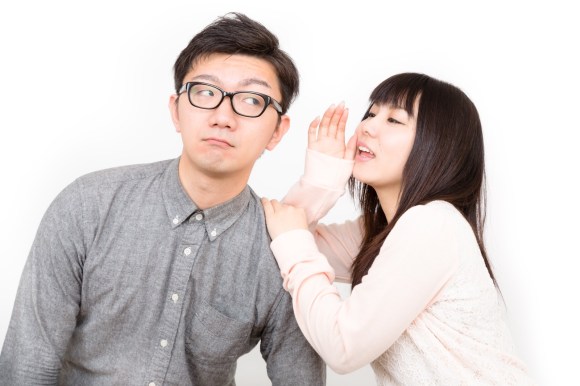
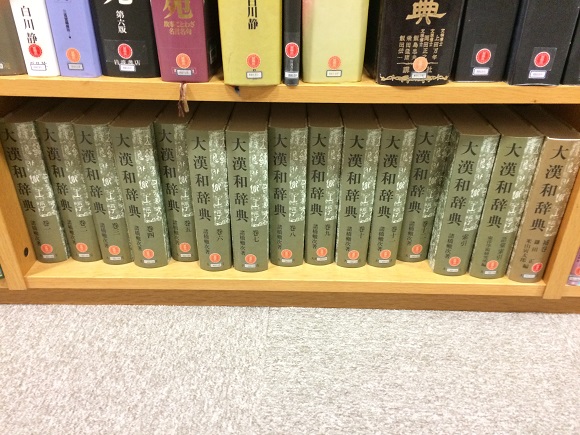
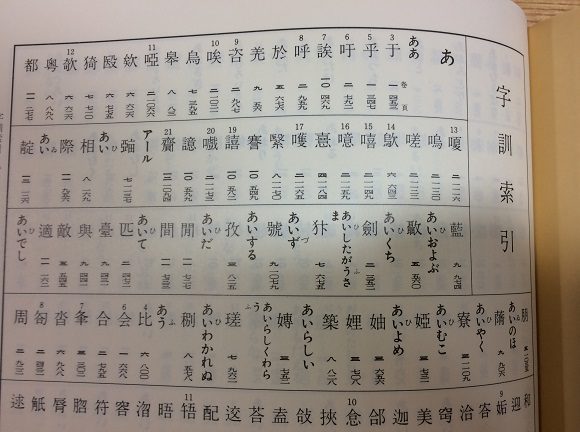

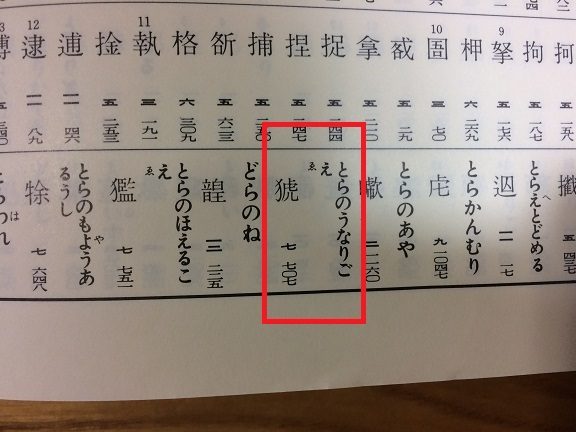
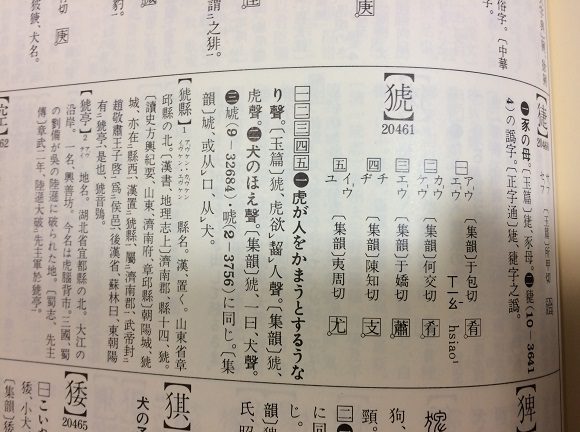


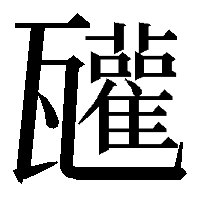
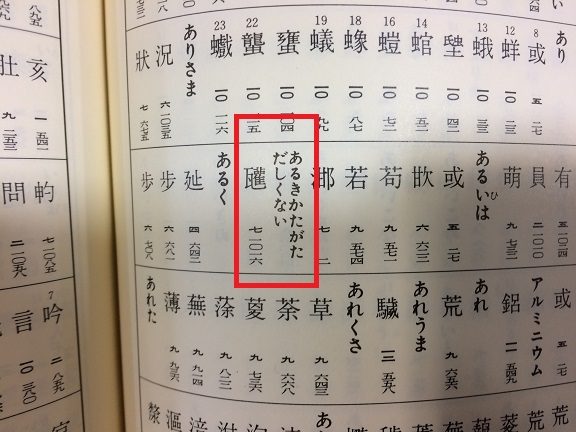

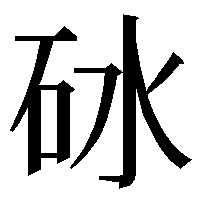
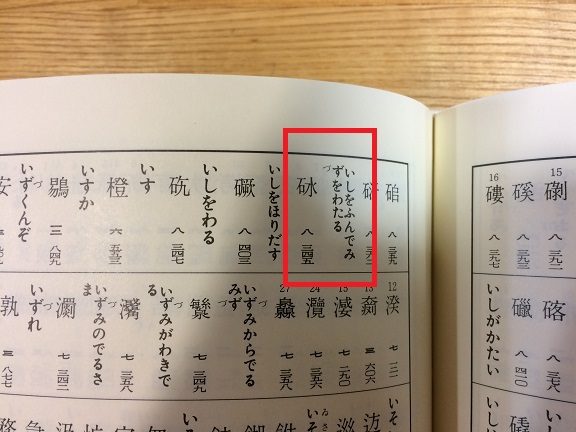
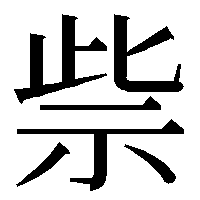

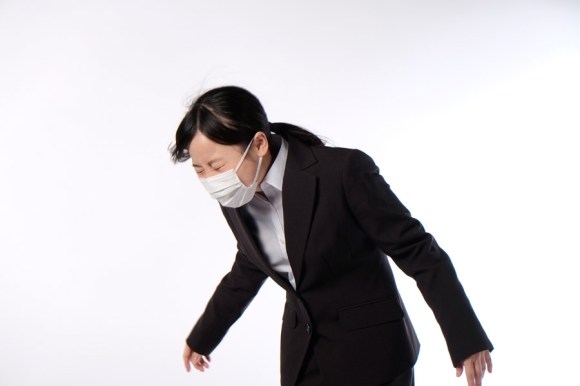
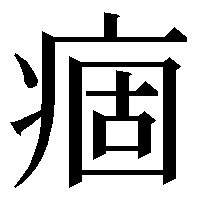
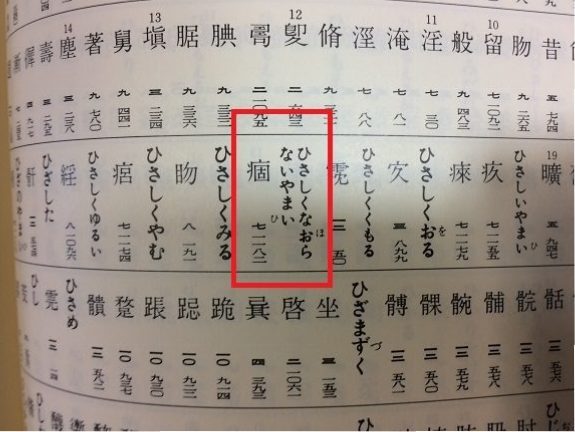


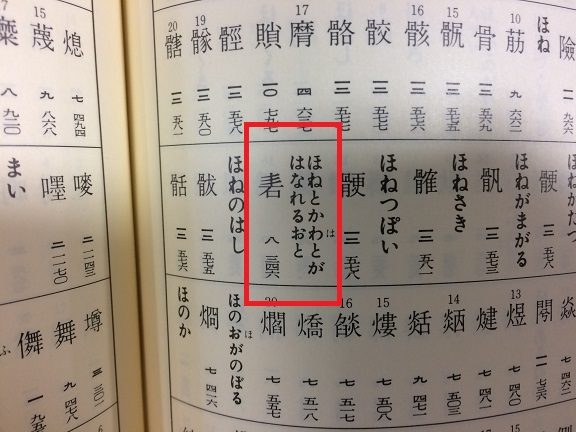
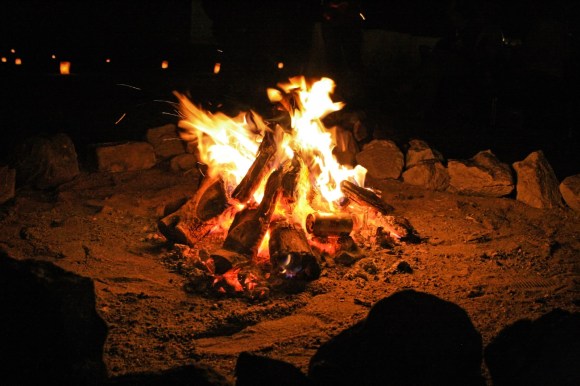
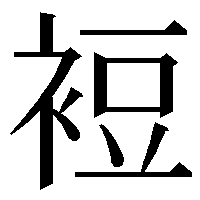
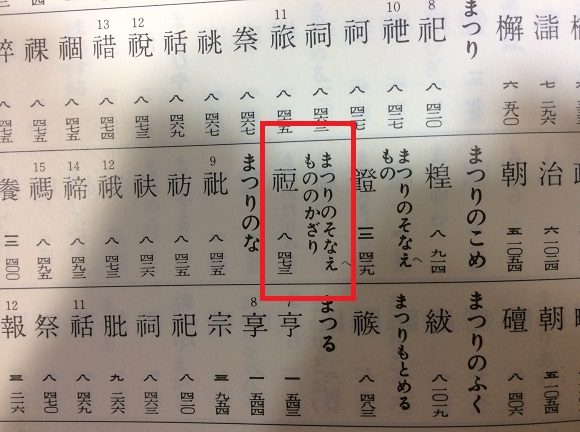
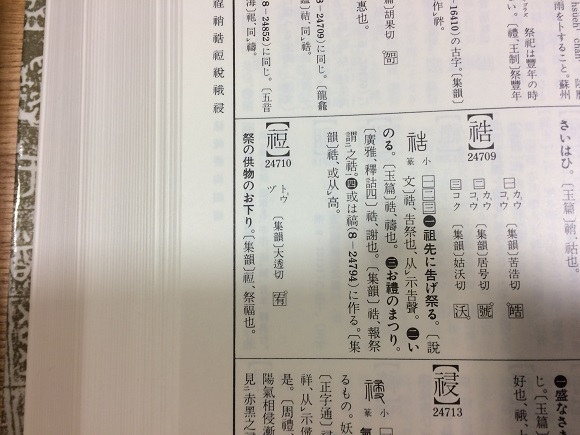
 W.T.F. Japan: Top 5 most difficult kanji ever【Weird Top Five】
W.T.F. Japan: Top 5 most difficult kanji ever【Weird Top Five】 Foreigners misreading Japanese kanji of “two men one woman” is too pure for Japanese Internet
Foreigners misreading Japanese kanji of “two men one woman” is too pure for Japanese Internet Japanese study tip: Imagine kanji characters as fighting game characters, like in this cool video
Japanese study tip: Imagine kanji characters as fighting game characters, like in this cool video Draft bill proposal seeks to curtail unconventional “kirakira” kanji name readings in Japan
Draft bill proposal seeks to curtail unconventional “kirakira” kanji name readings in Japan Four new era names the Japanese government rejected before deciding on Reiwa
Four new era names the Japanese government rejected before deciding on Reiwa Station of despair: What to do if you get stuck at the end of Tokyo’s Chuo Rapid Line
Station of despair: What to do if you get stuck at the end of Tokyo’s Chuo Rapid Line This downtown Tokyo cafe is like a time machine that takes you back 50 years into the past
This downtown Tokyo cafe is like a time machine that takes you back 50 years into the past Japanese government will check and judge new baby name pronunciations, presents guidelines
Japanese government will check and judge new baby name pronunciations, presents guidelines Totoro towels gently glow in the dark to set the Ghibli nighttime mood in your home【Photos】
Totoro towels gently glow in the dark to set the Ghibli nighttime mood in your home【Photos】 How to get all-you-can eat doughnuts at Mister Donut for just 12 bucks!
How to get all-you-can eat doughnuts at Mister Donut for just 12 bucks! Japanese company develops classy heavy metal band frames for glasses
Japanese company develops classy heavy metal band frames for glasses Nakano Broadway sells a fukubukuro lucky bag for foreigners, but is it a good deal or a scam?
Nakano Broadway sells a fukubukuro lucky bag for foreigners, but is it a good deal or a scam? Starbucks teams up with 165-year-old Kyoto doll maker for Year of the Snake decorations【Photos】
Starbucks teams up with 165-year-old Kyoto doll maker for Year of the Snake decorations【Photos】 Yakuza vending machines coming to real-world Tokyo neighborhood that inspired Like a Dragon games
Yakuza vending machines coming to real-world Tokyo neighborhood that inspired Like a Dragon games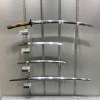 Genuine Muramasa blade and Muromachi katana on display at Tokyo’s Touken Ranbu store【Photos】
Genuine Muramasa blade and Muromachi katana on display at Tokyo’s Touken Ranbu store【Photos】 One of Japan’s rarest sweets is a sell-out hit that looks and tastes like frost
One of Japan’s rarest sweets is a sell-out hit that looks and tastes like frost Studio Ghibli showcases traditional craftsmanship with new wallet range
Studio Ghibli showcases traditional craftsmanship with new wallet range Mysterious light-up rainy night-sound Totoro figure doesn’t actually show a scene from the anime
Mysterious light-up rainy night-sound Totoro figure doesn’t actually show a scene from the anime Major Japanese city is abolishing extracurricular activities at all of its middle schools
Major Japanese city is abolishing extracurricular activities at all of its middle schools Over 800 Studio Ghibli anime world paintings compiled in beautiful new hardcover art book【Pics】
Over 800 Studio Ghibli anime world paintings compiled in beautiful new hardcover art book【Pics】 Spirited Away and Princess Mononoke plushies show a softer side of formidable Ghibli characters
Spirited Away and Princess Mononoke plushies show a softer side of formidable Ghibli characters Shakey’s is back! All-you-can-eat pizza chain returns to downtown Tokyo’s Shinjuku
Shakey’s is back! All-you-can-eat pizza chain returns to downtown Tokyo’s Shinjuku Studio Ghibli tea blends contain ingredients inspired by My Neighbour Totoro
Studio Ghibli tea blends contain ingredients inspired by My Neighbour Totoro Possessing Harry Potter’s Sword of Godric Gryffindor is now illegal in Japan
Possessing Harry Potter’s Sword of Godric Gryffindor is now illegal in Japan Uniqlo announces first-ever collaboration with horror manga master Junji Ito【Photos】
Uniqlo announces first-ever collaboration with horror manga master Junji Ito【Photos】 J-pop mega star Ado reveals she’s been living in the U.S., may not understand language acquisition
J-pop mega star Ado reveals she’s been living in the U.S., may not understand language acquisition Starbucks Japan is calling it quits with paper straws
Starbucks Japan is calling it quits with paper straws Studio Ghibli releases new range of cardigans for anime fans
Studio Ghibli releases new range of cardigans for anime fans Japan’s most popular castle raising ticket prices by up to 200 percent for non-local tourists
Japan’s most popular castle raising ticket prices by up to 200 percent for non-local tourists Furikake rice seasoning sales are soaring, which is bad news for Japan as a whole
Furikake rice seasoning sales are soaring, which is bad news for Japan as a whole Studio Ghibli heroine cardigans give you warmth and strength to face everyday challenges
Studio Ghibli heroine cardigans give you warmth and strength to face everyday challenges Eight unforgettable hot springs, as recommended by Japan’s “Professor Bath”
Eight unforgettable hot springs, as recommended by Japan’s “Professor Bath” McDonald’s new Happy Meals offer up cute and practical Sanrio lifestyle goods
McDonald’s new Happy Meals offer up cute and practical Sanrio lifestyle goods Foreign tourists on Shinkansen bullet train break suitcase etiquette, angering local passengers
Foreign tourists on Shinkansen bullet train break suitcase etiquette, angering local passengers [Deleted] Article written for April Fool’s Day 2018
[Deleted] Article written for April Fool’s Day 2018 Japanese government to make first change to romanization spelling rules since the 1950s
Japanese government to make first change to romanization spelling rules since the 1950s Foreigner’s request for help in Tokyo makes us sad for the state of society
Foreigner’s request for help in Tokyo makes us sad for the state of society Japanese convenience store Family Mart announces abolishment of eat-in spaces
Japanese convenience store Family Mart announces abolishment of eat-in spaces Life-size vibrating Legend of Zelda Master Sword for sale from Nintendo【Photos】
Life-size vibrating Legend of Zelda Master Sword for sale from Nintendo【Photos】 Princesses, fruits, and blacksmiths: Study reveals the 30 most unusual family names in Japan
Princesses, fruits, and blacksmiths: Study reveals the 30 most unusual family names in Japan Studio Ghibli releases free-download board game — Here’s how to play it without reading Japanese
Studio Ghibli releases free-download board game — Here’s how to play it without reading Japanese Twitter users say Japanese Prime Minister’s name is hiding in the kanji for Japan’s new era name
Twitter users say Japanese Prime Minister’s name is hiding in the kanji for Japan’s new era name Kanji Tetris is the coolest way to practice and play with Japanese that we’ve ever seen【Video】
Kanji Tetris is the coolest way to practice and play with Japanese that we’ve ever seen【Video】 Kanji fail — Japanese parents shocked to learn their baby girl’s name has inappropriate meaning
Kanji fail — Japanese parents shocked to learn their baby girl’s name has inappropriate meaning Renowned Japanese calligraphy teacher ranks the top 10 kanji that foreigners like
Renowned Japanese calligraphy teacher ranks the top 10 kanji that foreigners like “Disaster”: 2018 Kanji of the Year unveiled by Buddhist monk at Kiyomizudera temple in Kyoto
“Disaster”: 2018 Kanji of the Year unveiled by Buddhist monk at Kiyomizudera temple in Kyoto Foreigners in Japan vote for the best-looking katakana character
Foreigners in Japan vote for the best-looking katakana character “Gold” named 2016 Kanji of the Year
“Gold” named 2016 Kanji of the Year Pokémon Center apologizes for writing model Nicole Fujita’s name as Nicole Fujita
Pokémon Center apologizes for writing model Nicole Fujita’s name as Nicole Fujita Japan’s top baby names for 2015: Will Naruto-influenced monikers still reign supreme?
Japan’s top baby names for 2015: Will Naruto-influenced monikers still reign supreme? Testing Japan’s gacha capsule toy calligraphy brushes – tranquility for just 200 yen【Photos】
Testing Japan’s gacha capsule toy calligraphy brushes – tranquility for just 200 yen【Photos】 Japan announces Kanji of the Year for 2019, and it was really the only logical choice
Japan announces Kanji of the Year for 2019, and it was really the only logical choice The hidden meaning of the U.S. Air Force’s “shake and fries” patch in Japan
The hidden meaning of the U.S. Air Force’s “shake and fries” patch in Japan Japanese government tells teachers not to be so strict, at least about some kanji radicals
Japanese government tells teachers not to be so strict, at least about some kanji radicals Poop Kanji-Drill toilet paper is the best way to accomplish your Japanese studying doo-ties
Poop Kanji-Drill toilet paper is the best way to accomplish your Japanese studying doo-ties Transforming kanji watches not so great for telling time, perfect for being awesome
Transforming kanji watches not so great for telling time, perfect for being awesome “A dead bug” and other amusing, adorable, snarky, and downright ridiculous test responses
“A dead bug” and other amusing, adorable, snarky, and downright ridiculous test responses
Leave a Reply